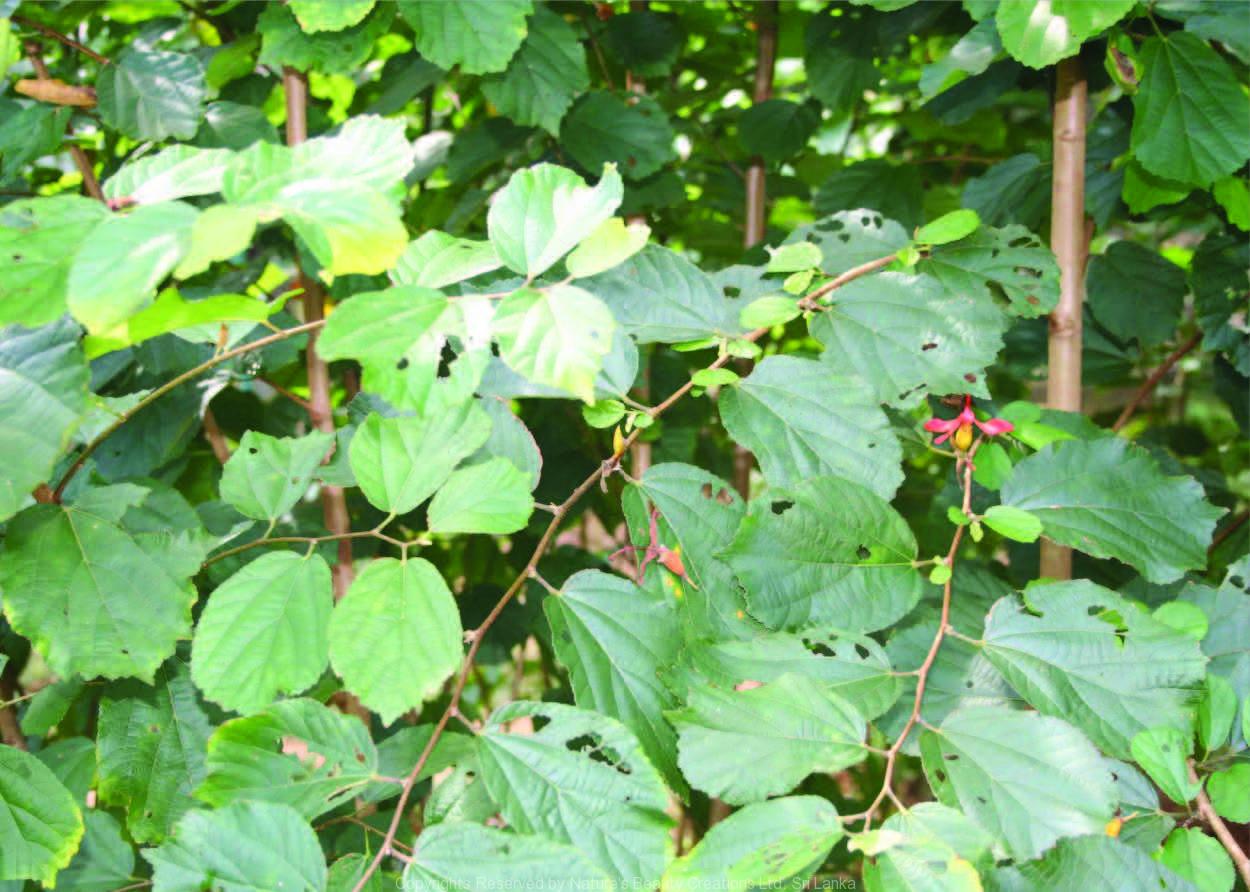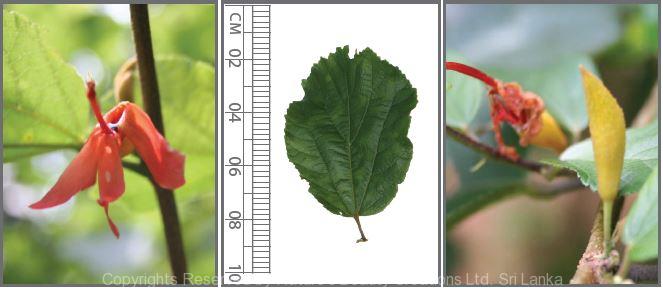

Traditional Knowledge
Useful plant parts :
Bark and fruit
Uses in traditional medicine :
- Fresh fruit juice or dried fruit infusion is taken for stomach problems
- One table spoon of bark decoction is taken thrice a day for diarrhoea
- Used to treat stomach ailments, flatulence and colic
Scientific Research
Chemical constituents:
Flavonoid glycosides: trifolin, hibifolin from leaves; neolignans: helicterins A–F, phenolic acids: rosmarinic acid and its derivatives from fruits; steroids: cucurbitacin B, isocucurbitacin B from roots
Bioactivity :
Fruits: antibacterial, antispasmodic, antioxidative, antidiabetic; aqueous extract of bark and ethanol extract of root: hypoglycaemic, hypolipidaemic; cucurbitacin B and isocucurbitacin B: cytotoxic; root extract: antinociceptive
Clinical:
References : Bean, M. F. et al., (1985), Cucurbitacin B and Isocucurbitacin B: Cytotoxic Components of Helicteres isora, Journal of Naural Products, 48(3), 500. Bhavsar, S. K. et al., (2009), Involvement of the PI3K/AKT pathway in the hypoglycemic effects of saponins from Helicteres isora, Journal of Ethnopharmacology, 126, 386-396. Chakrabarti, R. et al., (2002), Antidiabetic and hypolipidemic activity of Helicteres isora in animal models, Journal of Ethnopharmacology, 81, 343-349. Gayathri, P. et al., (2010), Screening and Quantitation of Phytochemi- cals and Nutritional Components of the Fruit and Bark of Helicteres isora, Hygeia Journal for Drugs and Medicines, 2(1), 57-62. Kamiya, K. et al., (2001), Flavonoid glucuronides from Helicteres isora, Phytochemistry, 57(2), 297-301. Kumar, G., (2000), Preliminary Toxicity and Phytochemical Studies of Aqueous Bark Extract of Helicteres L., International journal of Pharma- cology, 3(1), 96-100. Kumar, G. et al., (2006), Hypoglycaemic effect of Helicteres isora bark extract in rats, Journal of Ethnopharmacology, 107, 304-307. Kumar, G. and Murugesan, A. G., (2008), Hypolipidaemic activity of Helicteres isora L. bark extracts in streptozotocin induced diabetic rats, Journal of Ethnopharmacology, 116, 161-166. Petersen, M. et al., (2009), Evolution of rosmarinic acid biosynthesis, Phytochemistry, 70, 1663-1679. Pohocha, N. and Grampurohit, N. D., (2001), Antispasmodic activity of the fruits of Helicteres isora Linn., Phytotherapy Research, 15(1), 49-52. Ramesh, P. and Yuvarajan, C. R., (1995), A new flavone methyl ether from Helicteres isora, Journal Of Natural Products, 58(8), 1242-1243. Surveswaran, S. et al., (2007), Systematic evaluation of natural phenolic antioxidants from 133 Indian medicinal plants, Food Chemistry, 102, 938-953. Suthar, M. et al., (2009), Antioxidant and Antidiabetic Activity of Helicteres isora (L.) Fruits, Indian J Pharm Sci, 71(6), 695-9. Satake, T. et al., (1999), Studies on the Constituents of Fruits of Helicteres isora L., Chemical and Pharmaceutical Bulletin, 47(10), 1444-1447. Tambekar, D. H. et al., (2008), Evaluation of phytochemical and antibacterial potential of Helicteres isora L. Fruits against enteric bacterial pathogens, African Journal of Trad, Comp and Alternative Medicine, 5(3), 290-293. Tezuka, Y. et al., (2000), Helicterins A–F, Six New Dimeric (7.5’,8.2’)-Neolignans from the Indonesian Medicinal Plant Helicteres isora, Helvetica Chimica Acta, 83(11), 2908-2919. Venkatesh, S. et al., (2007), Antinociceptive activity of Helicteres isora, Fitoterapia, 78(2), 146-8.
Copyrights Reserved By
Natures Beauty Creations




